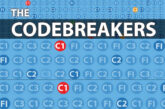
Need help with cracking those EICR codes? The technical team at NAPIT, with the help of the 18th Edition Codebreakers publication, answer your latest coding queries. Click on the photos for a closer look!
ASHLEY MOORFIELD: THIS WAS DISCOVERED ON A RECENT JOB: A SELF-BUILDER WHO KNEW ALL ABOUT ELECTRICS! I’VE NEVER SEEN ANYTHING LIKE THIS BEFORE!
Unfortunately, this is a commonly found misdemeanour in many properties, especially kitchens. This type of problem was a key driver for implementing Part P in England and Wales in 2005. It was the reason an MP’s daughter sadly met her death when coming into contact with a metallic utensil rack that had been installed in an area where cables weren’t expected to be.
However, the wiring installer had not taken note of safe zones, and the utensil rack fixing penetrated a hidden live conductor. When the MP’s daughter touched the utensil rack while simultaneously being in contact with a piece of earthed white goods, she received a fatal electric shock.
There is a very important reason we have safe wiring zones: they are critical and must never be overlooked or ignored. Safe zones are fundamental requirements, and the lack of understanding or following them led to the single biggest Regulation change in the electrical industry for some years, with the implementation of Part P of the Building Regulations.
Where a cable is installed in a wall at a depth of less than 50 mm, Regulation 522.5.202 requires that they be installed in safe zones. The only way this would not be the case is if the installed cables complied with 522.6.204, which they evidently don’t, as the type fitted here are flat twin and earth.
Failing to comply with this Regulation is only going to have one outcome on an EICR, given its potential for danger, especially where multiple fixings for shelving and wall units have been drilled in the unexpected cable routes.
Order your copy of NAPIT Codebreakers here









